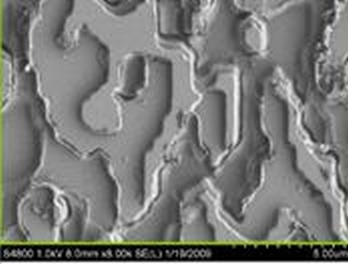Will a noticeable diffraction pattern appear if I use a single continuous slit, say a ring shaped one?If yes, can it be explained how the slits were paired for interference observations , and is there a particular expected pattern to it?
-
3$\begingroup$ You can get a diffraction pattern by shining a laser through a single-slit, double-slit, a ring-shaped slit, a star-shaped slit, a Mickey-Mouse-shaped slit, etc., etc.. Single- and double-slit setups are by far the most popular because they are the simplest to analyze and understand for the purpose of studying diffraction. $\endgroup$– user93237Commented Nov 6, 2015 at 6:24
-
3$\begingroup$ Yes. The most noticeable thing is that, if the screen is pretty close to the slit, there will be diffraction bands outlining the object, like this. That's because near such the edges, the object just looks like the edge of a barrier (and we know what that looks like). $\endgroup$– knzhouCommented Nov 6, 2015 at 6:33
-
1$\begingroup$ If you know more math: if the screen is far away, the pattern is the Fourier transform of the function that is one wherever the slit is. This is something we know how to calculate for all slit shapes. $\endgroup$– knzhouCommented Nov 6, 2015 at 6:34
-
$\begingroup$ If you find a decent book on optics, there'll be a section showing that a ring aperture passes the highest-frequency phase portions of the source, while the opposite (an "apodized" filter), a filter whose transmission is highest at the center and lowest near the edge ("ring") passes the lowest spatical frequencies. $\endgroup$– Carl WitthoftCommented Nov 6, 2015 at 13:22
1 Answer
As Kevin Zhou pointed out in his comment, behind every edge light will be distributed in fringes. As long as one expose curved edges or with light from a point like source or with light from parallel rays there will appear an detectable intensity distribution behind edges. Using monochromatic light and a point like source will give the best results.
The only way to see changing fringe shapes over a ring shape is to use polarized light. With light from equally distributed electric field component (non-polarized light) the intensity distribution will be equal over the shape. Last not least as you can see from this pinhead the distribution changes with the change of the curvature of an edge.
There are programs to make shapes like this
to form the outgoing light to patterns like some text or company logos or the laser light for car headlights.

